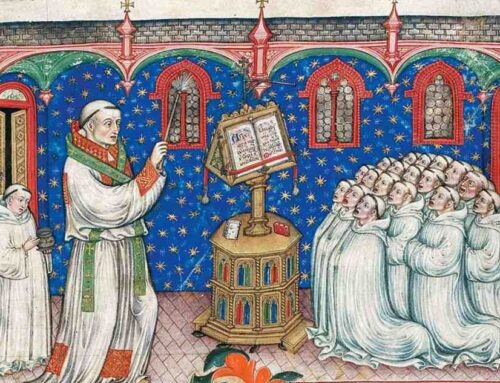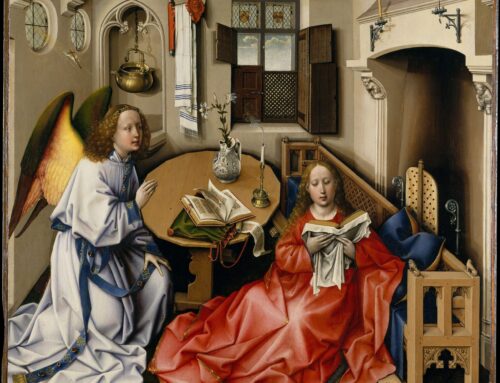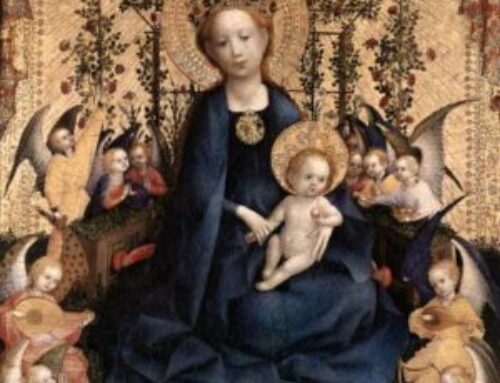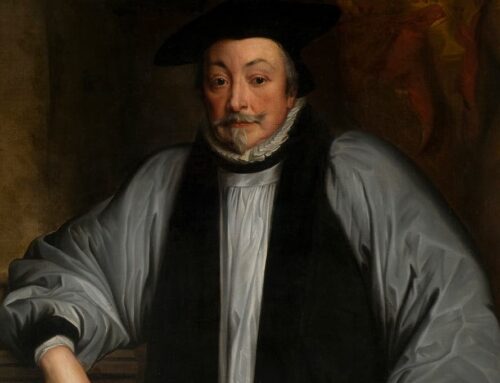Christopher Tye was probably born in Cambridgeshire, where the family name was common, around 1505, making him about the same age as is more famous contemporary, Thomas Tallis (c. 1505-1585). He is often mentioned as one of the “three T’s” of English music alongside Tallis and John Taverner. We first hear of him when he received his Bachelor of Music at Cambridge in 1536/7. He is recorded as a Lay Clerk at King’s College and was a member of the first generation to sing in the newly completed chapel, the one beloved throughout the world today. The records of his time in Cambridge are found in the college’s Mundum and Commons books, the detailed account books of the institution. He disappeared from the records after 1539. While there are no records of him in the years immediately following his time at Cambridge, he was appointed as Magister Choristarum at Ely Cathedral, possibly as early 1541, but certainly by 1543. He received his doctorate in 1545. Though he and Tallis moved in similar musical circles, the differences between the two men were stark. While both composers skillfully navigated the turbulent waters of religion in 16th century England, Tallis remained Roman Catholic, while Tye had clearly demonstrated protestant proclivities. Tallis was described as “mild and quiet,” while as will be seen, Tye was none of those things. These characteristics were apparent in their music, as well. Tallis was generous and self-assured, taking an even-handed and confident approach. Tye takes musical risks and composes with an almost undisciplined and unrestrained enthusiasm.
Tye’s career seems to have been promoted by Richard Cox, a zealous reformer who was Archdeacon of Ely and later, Chancellor of Oxford University and Bishop of Ely from 1559 to 1580. Cox was the tutor of Prince, and then King Edward VI, from 1544-1550, and it was he who introduced Tye to the Royal Court, where it is likely that Tye also had some responsibilities with Edward’s musical education. Edward refers to Tye as “oure musick’s lecturer.” Tye published a metrical version of the Acts of the Apostles in 1553, which was dedicated to Edward VI, and which on the title page refers to Tye as “one of the Gentylmen of hys grace’s most honorurable chappell.” The Acts was intended as a didactic musical vehicle for teaching scripture in the home and had no liturgical intention. Mysteriously during Edward’s reign, Tye’s name doesn’t appear on the roles for the Chapel Royal, but by Mary I’s coronation in 1553, he is listed as a member and given a livery allowance. Tye, like Tallis and Sheppard, composed freely between the two liturgies, but in all cases, it was the restoration of the Roman Catholic Church that offers all of them the opportunity to compose in a more extravagant style.
Tye’s Latin works are notoriously difficult to date with any precision; there are convincing arguments for both Henrican and Marian dates for several works. It is unknown if Tye remained at Ely for his entire musical career, the records are lost, but his name appears again in 1559, where payment and accompanying letter from the Dean and Chapter appear to be reinstating him. If he was returning, his reappointment was undoubtedly instigated by Richard Cox, who was consecrated Bishop of Ely in 1558. Shortly after his return to Ely, Tye decided to take holy orders; he was ordained a priest in 1560. He resigned from his position at Ely in 1561. He was succeeded by Richard White, who married one of his daughters. Tye apparently stopped composing when he was ordained. Even though he was made rector of Doddington, his career as a cleric was not illustrious, to say least, and he was, on one occasion, reported to Archbishop Parker as “not, however, skilled at preaching.” He also seems to have neglected his parishes, and all but disappears from history.
His two undisputed masterpieces are the Missa Euge bone, and Peccavimus cum patribus nostris which will be performed by Polyhymnia on March 12. Both are in the older Latin style, though either piece could come from either side of the Edwardian Reformation (1547-1553). There is an argument that the mass was composed for Tye’s doctorate in 1545 during the last years of Henry VIII’s reign. It is important to remember that despite Henry’s split from all things Roman, that when it came to church, he preferred the mass and music to be in Latin. Mary I of course returned to a liturgy that pre-dated her father’s reformation. The music is exciting and brash, unlike that of his more well-known contemporary, Tallis whose calm, confident style is musically reassuring, stands in stark contrast to the passionate almost haphazard writing of the mass, and the undisputed inventiveness of the Peccavimus. When it comes to the English Anthems, there is a Reformational fire in Tye’s music that again contrasts with the simple hymn-like four voice music that one often thinks of as chacteristic of the Anglican Reformation.
Tickets: https://www.eventbrite.com/e/for-musicks-art-tickets-168717192665






Leave A Comment